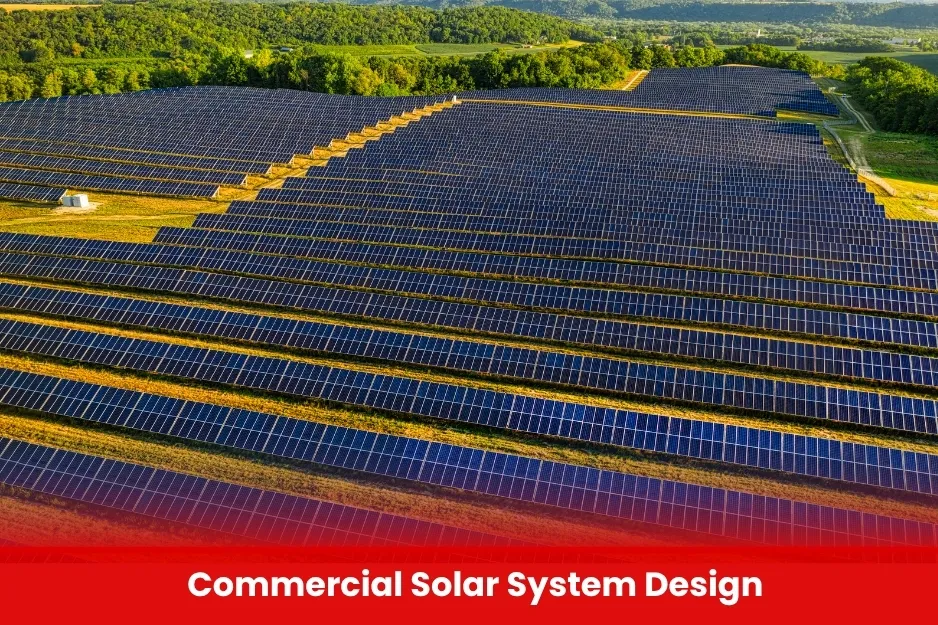Commercial Solar System Design
At Burrāq UK, our Commercial Solar System Design course is designed to provide learners with comprehensive knowledge and practical skills required to design, plan, and implement solar photovoltaic (PV) systems for commercial applications.

Aim of Commercial Solar System Design
The aim of the Commercial Solar System Design course is to equip participants with the knowledge and practical skills necessary to design, size, and implement efficient and reliable solar photovoltaic (PV) systems tailored for commercial applications, ensuring compliance with industry standards and maximizing energy efficiency.
Course Overview
Commercial Solar System Design
Total Modules 10
Training Credits 16
Directed Learning Hours (DLH) 80
Course Code BUK 1378
Educational Requirements:
- Minimum qualification: Matric (10th grade) with Science (Physics)
- Preferred qualification: Diploma or Degree in Electrical, Electronics, Mechanical Engineering, or related fields
Professional Background:
- Electrical engineers, technicians, or electricians seeking to specialize in solar PV design
- Renewable energy professionals or enthusiasts aiming to expand their knowledge
Technical Skills Required:
- Basic understanding of electrical circuits and systems
- Familiarity with electrical measurements and tools
| Course Code | Curriculum Title | Credit | DLH |
|---|---|---|---|
| BUK1378-1 | Introduction to solar system and Solar Syste Installation | 2 | 10 |
| BUK1378-2 | PV Array and its types | 2 | 10 |
| BUK1378-3 | Intro to PVSYST software | 2 | 10 |
| BUK1378-4 | PV system major parts | 2 | 10 |
| BUK1378-5 | Inverter | 2 | 10 |
| BUK1378-6 | Mounting hardware or a framework | 2 | 10 |
| BUK1378-7 | Panel mountings and their types | 2 | 10 |
| BUK1378-8 | Panel size calculations | 2 | 10 |
Learning Objectives
- Those working or aspiring to work in solar energy project
- Wanting to specialize in commercial solar system design
- Skilled electricians aiming to transition into solar system design and planning roles
- Students or fresh graduates from Electrical, Electronics, Mechanical, or related fields wanting practical industry-oriented knowledge
- Introduction to solar system and Solar System Installation
- PV Array and its types
- Mono Crystalline vs. poly Crystallite
- Intro to PVSYST software
- PV system major parts
- PV modules (groups of PV cells), which are commonly called PV panels
- Batteries
- Charge regulator or controller for a stand-alone system
- Inverter
- Wiring
- Mounting hardware or a framework.
- Panel mountings and their types
- Rail-based mounting system.
- Ballasted mounting system.
- Anchored mounting system.
- Residential roof.
- Standing-seam mounting system:
- Corrugated roof mounting system.
- Fully-railed system or Shared-rail system.
- Rail-less mounting system.
- Pv system types
- Grid-tied system
- Grid-tied system with battery back-up
- Off-grid system
- Solar system installation considerations
- Load calculations
- Panel size calculations
- Battery types and size calculations
- Charge controller types and selection
- PWM vs MPPT controllers
- Inverter types and selection calculation
- Battery-based Inverter/Charger
- All Modules within this qualification are assessed internally by the approved training Centre and externally verified by BURRAQ UK. The program uses a criterion-referenced assessment approach to ensure that learners successfully meet all required learning outcomes.
- A Pass in any unit is granted only when the learner submits valid, reliable, and authentic evidence that demonstrates achievement of the assessment criteria. The Assessor is responsible for reviewing this evidence and confirming that the learner has attained the expected standard.
- To guarantee fairness, transparency, and consistency, assessors are required to maintain a detailed audit record, clearly documenting the basis of their assessment decisions in line with quality assurance requirements.
